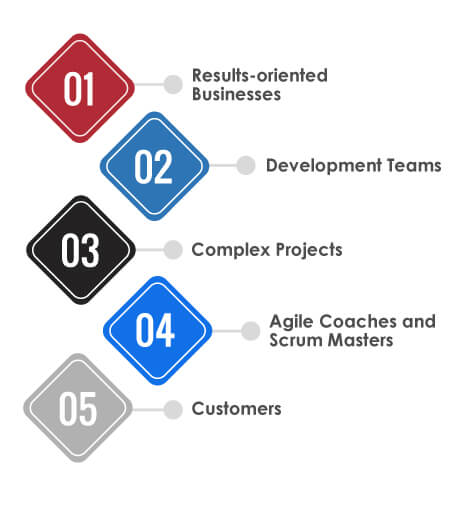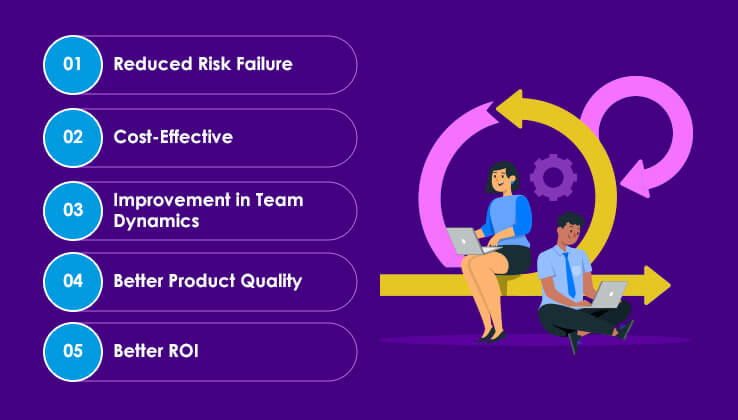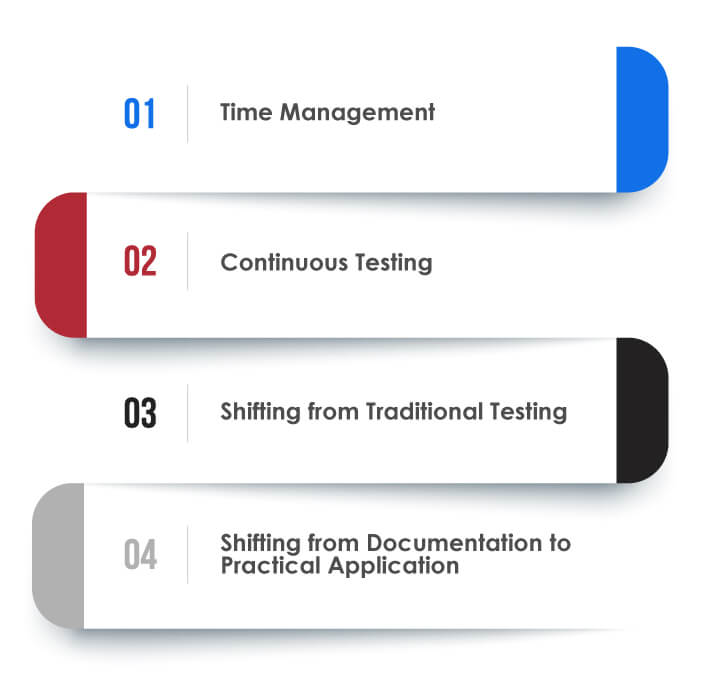
- An Overview of Agile Scrum Methodology and its Working
- Who Benefits from Agile Scrum?
- Business Benefits of Agile Scrum Methodology
- Why Agile Scrum Testing is Important?
- Summary
Did you know? Scrum and Agile can work separately, but when combined, their benefits make them incredibly popular among companies of all sizes. Currently, the world revolves around a fast-paced software solution, and agile is the foremost choice for any project execution in several instances. We often read how a certain company has become. They will describe the process involving two-week sprint meetings, the backlog refinement process, etc. After reading all this, a thought always comes to mind: “It looks similar to a scrum.” So, is Agile scrum or Scrum agile? This comprehensive guide to Agile Scrum methodology will answer all these questions. But before that, we must understand that the Agile Scrum model will not work for every business. Each industry has its own unique requirements, and it is not possible that it will always sync with Agile methodologies.
An Overview of Agile Scrum Methodology and its Working

Agile Scrum methodology utilizes Agile philosophy and Scum framework to allow teams to work on projects in small increments or steps. Although Scrum is one of the Agile methodologies, it is popular among teams because of its ability to break down projects into smaller chunks called sprints. This method benefits businesses who want to complete their software development projects quickly.
This project management system depends on incremental development, in which each iteration consists of 2-4 weeks sprints. Each sprint focuses on building and rolling out priority features first and then working on backend tasks. The rest of the features are built in subsequent sprints and rolled out based on the client’s and other stakeholders’ feedback during sprint calls.
Generally, the project management methods focus on developing and deploying the entire product in a single operation. But the Agile Scrum methodology is different. It focuses on developing and delivering software in multiple sprints to provide stakeholders with better value in a minimal timeframe. It promotes faster software development as each sprint contains multiple goals that must be completed within the given timeframe. This requires frequent planning and goal setting, allowing businesses to focus on their current objectives and improve productivity.
Who Benefits from Agile Scrum?
Scrum is useful in a wide array of projects, and its key beneficiaries include:

Results-oriented Businesses
Scrum benefits businesses that value results over progress reports. When applied to a project, it focuses on innovation and efficiency, making it an indispensable tool for businesses prioritizing results over a rigid and detailed process.
Development Teams
Scrum can improve the development team’s productivity and collaboration approach. It assists teams in focusing on their goals, managing workloads, and delivering results incrementally.
Complex Projects
This methodology is perfect for projects that involve backlog completion. Scrum breaks the process into sprints, making the complex project easier.
Agile Coaches and Scrum Masters
These stakeholders benefit from Scrum by promoting continuous improvement and collaboration. They guide teams throughout the Scrum process, removing discrepancies and ensuring everyone follows its principles. They improve the team’s performance and the project’s success rate.
Customers
Scrum benefits customers by delivering a software product that perfectly aligns with their requirements. It promotes regular communication between the customer and the development team and ensures regular feedback is integrated into the development process. Complex Projects This methodology is perfect for projects that involve backlog completion. Scrum breaks the process into sprints, making the complex project easier.
Business Benefits of Agile Scrum Methodology
Agile Scrum methodology significantly benefits businesses that focus on speeding up their development cycle while ensuring end-product quality. Combining Agile’s flexibility with a structured Scrum framework can improve collaboration, productivity, and product quality. Let’s take a look at the detailed benefits of agile scrum methodology:

Reduced Risk Failure
The Scrum framework reduces the risk of project failure by speeding up deployment and decreasing time-to-market. This saves a lot of time, money, and effort, as businesses can avoid failures before they happen. Teams can complete high-priority and risky tasks beforehand and start with low-priority tasks later. Even if there’s a failure, agile scrum methodology can handle the situation to quite an extent.
Cost-Effective
Agile Scrum enables businesses to improve quality, time to market, and productivity, which results in cost savings. They can efficiently utilize resources, reduce the rework process, and easily identify issues early, saving overall project costs. This makes Scrum an irreplaceable asset for businesses looking for maximum ROI.
Improvement in Team Dynamics
Scrum allows businesses to improve their teams’ productivity and work quality by reducing miscommunication. Members who clearly understand their tasks will better support each other’s decisions and work. Scrum also promotes cross-functional collaborations to enable teams to expand their skill sets. Most of all, Agile Scrum methodology reduces work pressure and stress among team members, resulting in better productivity.
Better Product Quality
Scrum promotes continuous improvement and regular testing. With Scrum testing, businesses can regularly review and refine their work in each sprint and catch and fix bugs early.
Better ROI
Every business wants to attain higher returns on its investments. And it’s a fact. Agile scrum methodology allows businesses to improve their time-to-market, which enables them to obtain better ROI. When the software is released before its scheduled date with better quality, it will gain more user exposure, which increases the chances of high returns.
Why is Agile Scrum Testing Important?
Agile Scrum testing is necessary for project development to address the following challenges:

Time Management: Sometimes, the project must be delivered before its scheduled date due to some constraints. This requires critical time management. In such cases, Agile Scrum project management would come in handy. In this, the teams work in time-boxed sprints that last a few weeks. Testers can effectively manage their time and complete their test runs as each process is divided into small sprints. Prioritizing test cases, expanding test coverage, and maintaining speed with completeness would help them achieve their goals.
Continuous testing
Some projects require frequent and rapid testing as the QA process was involved in the latter half of the SDLC, which becomes a stressful task for testers. Agile Scrum facilitates continuous testing throughout the SDLC, in which testers can ensure quick turnaround time for test case execution as the QA process was involved from the start of the project. The rapid feedback allows them to keep up with the pace of development.
Shifting from Traditional Testing
It is challenging to shift from traditional testing methodologies to Agile Scrum testing. One must change one’s mindset to do this. Agile Scrum assists testers in adapting to an iterative and incremental development approach and opening themselves to continuous feedback and collaboration. Aligning with Agile principles would allow businesses and their teams to deliver better-quality software products.
Shifting from Documentation to Practical Application
Agile Scrum is more practically aligned rather than focusing on documentation. This allows testers to focus on their testing activities and ensure the software is in working and optimal condition rather than focusing on creating detailed test plans and extensive documentation.
Summary
Agile and Scrum methodologies are good solutions for managing your software development and deployment process. Integrating them in testing to quality-check complex applications would assist you in your software delivery process, making it more accurate and efficient. Another option is to partner with a professional digital assurance provider like Tx, which utilizes Agile principles and Scrum methodology to assist its clients in delivering robust and high-quality software to their customers. Our global delivery model assists in setting up frameworks to allow businesses to test agile implementations and best practices such as Scrum of Scrum (SoS), Behavior Driven Development (BDD), Scrum, and more.
To know more, contact our QA experts now.
Discover more
Get in Touch
Stay Updated
Subscribe for more info




